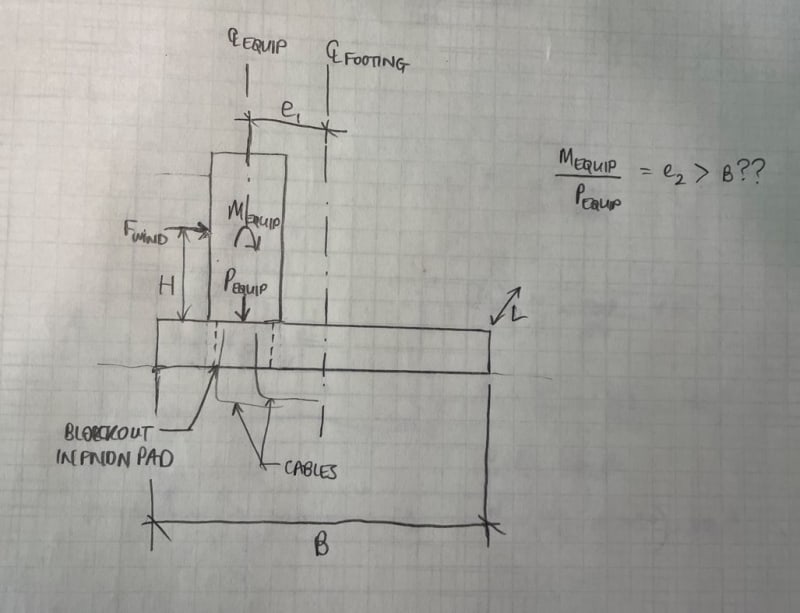Hi all, I have an equipment foundation pad as shown in the attached. Wind load is pretty high (V=170mph) and the equipment itself is slender in the short direction (B as shown). The equipment itself is offset from the center of the foundation pad (shown by e1) but due to the lateral load, there is also a “moment” (I put moment in quotes because the equipment is bolted at the base so really there is a force-couple acting). I tried to find what my additional eccentricity would be based on the moment and applied load (e2) but turns out that e2 is larger than the desired width of the pad. There are constraints preventing them from making the pad wider. I am not sure if I am looking at this correctly. If I am, I don’t know what to do aside from making the pad super deep. Any thoughts/advice?
Edit: I will also add that the equipment itself is only ~540 lb so it does not provide much resistance to OT.
Edit: I will also add that the equipment itself is only ~540 lb so it does not provide much resistance to OT.

